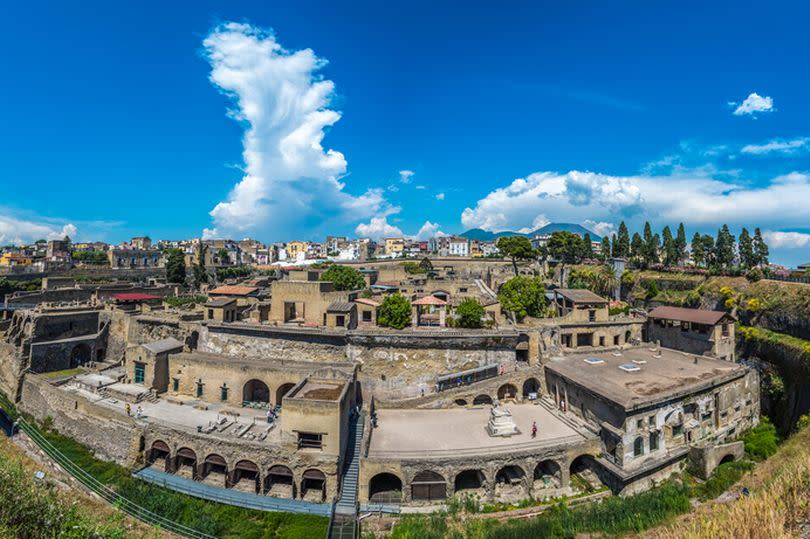Ancient beach buried by Mount Vesuvius eruption nearly 2,000 years ago reopens

An ancient beach in Italy, previously concealed by the infamous eruption of Mount Vesuvius almost 2,000 years ago, has been unveiled after meticulous restoration efforts.
The rejuvenated site within the Archaeological Park of Herculaneum now invites visitors to experience a journey back in time and explore the city that suffered the catastrophic eruption around 79AD.
Offering his insightful comment, Italian Culture Minister, Gennaro Sangiuliano, said: "This site has been hugely redeveloped and is becoming a gem. We are within one of the most important archaeological areas in the world with Pompeii, Oplontis and Herculaneum and we are also working a lot in terms of resources. The Archaeological Park of Herculaneum is a great historical memory and the value of history."
Over recent decades, the area had been increasingly degraded due to natural factors transforming this beach into somewhat of a marshland.
Conveying his vision about the project, Francesco Sirano, Director of the Archaeological Park, stated: "The ancient beach is an extraordinary and unique place in the world. To preserve it for the future, we have reduced the risk of continuous flooding and the dangers to the stability of the excavation fronts and the seafront of the ancient city.", reports the Mirror.
"After three years of intense work aimed at enhancing the ancient beach of the Herculaneum excavations, through the drainage and filling of the area formerly occupied by the beach, visitors are given the opportunity to freely access the entire area and to understand the dynamics that led to the burial of the city," he added.
The town of Herculaneum, which lies in the shadow of Mount Vesuvius, was entombed under a three-metre layer of volcanic ash following the infamous eruption. It is believed that over 1,000 people perished as a result.
The beach area was first unearthed during the 1980s and 1990s when the skeletons of those who once lived there were discovered amidst the ruins.
In 2021, Herculaneum made headlines again with the discovery of the 'last fugitive' - the remains of a man, estimated to be around 40 years old, who appeared to have been fleeing towards the sea with a bag of valuable items. Alongside the 'last fugitive', preserved shrubs, roots, ceiling fragments, boats, and toppled trees were found on the ancient beach.
At the moment of the eruption, the scorching cloud would have reached temperatures exceeding 400 and speeds of 80 km/h. Subsequently, the volcanic mud from Vesuvius encapsulated the bodies, preserving them in their final moments.

 Yahoo News
Yahoo News 
